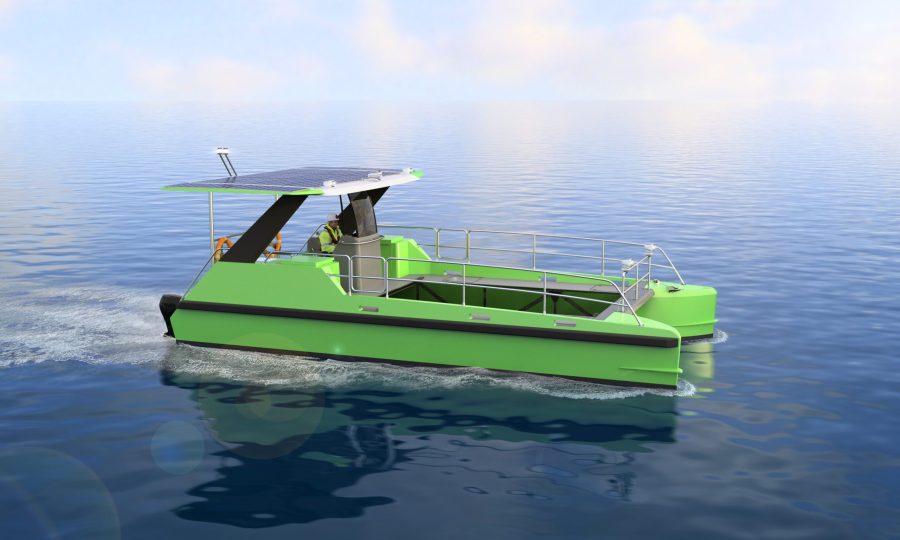There’s been a recent upsurge in the production of boats dedicated to removing floating debris and trash from coastal and inshore waters – a task that cleans up the immediate environment and, crucially, prevents the outflow of this waste into the sea, where effective removal becomes far more difficult.
The new Grasshop catamaran concept, developed by Thailand-based boat design studio Albatross Marine Design (AMD), aims to join this growing band of specialist clean-up craft. The boat was initially developed in response to a request from an AMD customer situated in the UAE, but could also find applications throughout Southeast Asia. Targeting the latter territory is particularly important, given that World Bank Group figures indicate that Thailand, Malaysia and the Philippines are leaking disturbingly high volumes of plastic into rivers and seas.
Intended for operations in close proximity to beaches, marinas, embankments and ports, the 10m x 4.5m Grasshop has a suitably shallow draught of 240mm, ensuring accessibility to all but the most restricted of waters. Albert Nazarov (FRINA), AMD managing director, tells Ship & Boat International that the vessel can safely operate out to “five miles from harbour”, while its flat bottom makes it easy to beach the boat.
The Grasshop is 100% electric, so extended garbage collection missions won’t be offset by the harmful effects of diesel emissions. Nazarov explains that the boat’s roof will host a 13.5m2 spread of solar panels, drawing up to 3.4kW of clean energy with which to feed its batteries. “We plan to use electric outboard motors,” he confirms, suggesting that Torqeedo’s Cruise e-motor range (which spans 6-25hp) could be one option. Onboard battery recharging would most likely take place overnight, utilising a shore-based power source, and this all-electric arrangement will gift the Grasshop an estimated operational speed of 4knots, increasing to 6knots max.
The Grasshop also benefits from a modular design, enabling operators to disassemble the boat to ship to other locations. The basic version of the Grasshop will be built in composite materials, though aluminium alloy can be specified.
The vessel has a depth of 1.2m, while the accommodation area – arranged for a two-person crew – offers 2.2m of headroom. “The hulls are designed to accommodate the battery compartments, one toilet and a small storage/hanging locker,” says Nazarov. The Grasshop’s control station is located on the deck, for minimal obstruction to the crew’s line of sight, and floating trash is collected by a removable basket, positioned between the boat’s hulls, which can collect up to 5m3 of debris.






